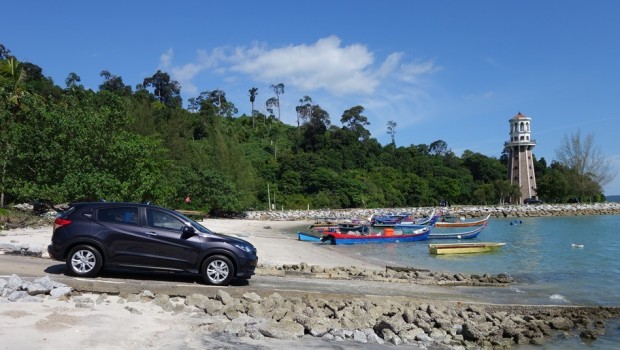HR-V Media Drive Part 1: Design & Practicality
Honda loves its new HR-V, and so do more than 12,000 Malaysians standing in line for months to get their hands on one. That’s right, in less than a year, Honda Malaysia has managed to introduce a new nameplate to the country (think of the first HR-V as an unrelated experiment) and then sell more of it than it can produce. But it’s not just some ‘Honda Magic’ that got them where they are with their new crossover SUV. It took vision and focus to produce a car so good that people are willing to wait half a year to own.
To demonstrate what exactly makes the HR-V the car to beat right now, Honda brought members of the media to Langkawi, where the great mix of winding roads and wide highways would give the HR-V a proper opportunity to prove its mettle. Despite being quite the looker, the car would compete against mountain ranges and pristine beaches to stand out.
Upon arriving, we were put in HR-Vs and sent down an interesting route, stopping for car competitor car comparisons along the way that showcased the car’s efficient use of interior space. Let’s face it, the Honda looks like a much smaller car than its competitors, and most of them have all-wheel drive options and higher driving positions. To our surprise however, when it came to usable space, the HR-V put these two large Korean crossovers to shame. In the both comparisons, there’s room enough for at least another golf bag, or in this case, human being.
The drive to those two cars took us through the interior of Langkawi’s jungle-flanked roads. On some of the more windy roads, the car did a great job of hugging corners with only bit of roll. It felt like a very driver-oriented car, more sedan than SUV. Just like in the City, there’s a lot of passenger space. But unlike the City, here there are combi-leather seats and doors made almost entirely of soft-touch leather material.
It’s not all great news though, the air-conditioner vent placement was very odd. Unique, for sure, but odd considering the fact that the City – which has a sealed off luggage compartment and hence less air to cool – has rear vents as an option. On even the most expensive HR-V, you get nothing but the asymmetrical front-only vents that work overtime to bring the temperature down. It does do its job in a few short minutes, but without proper tinting, leaving it parked in the boiling sun will pose problems.
There was also the compartment under the centre console close to where the USB and power ports. Unless you roll up your cables or have shorter ones, it will be a little messy. There’s also the question of the rear door handle, which is hidden away in a pretty high-up position, which would make it difficult for children to reach.
All of these though are examples of how Honda put design first. That is truly admirable, considering it was still practical in other ways. In a world where car design in slave to what customers will find useful, what engineers will find easier and management will find cost-effective, Honda has decided to put design at its forefront with the HR-V.
It’s admirable because a car reflects his owner and his values. Honda has recognised that the 21st century consumer is someone who puts design over conformity but knows that a product has to be thoroughly reliable before investing in it. This is what drives smartphone sales and it’s a formula that works with cars as well. The HR-V is a perfect example of this – of how the crossover with coupe-derived styling will supplant the sedan and conventional design, just like how the mobile device replaced the desktop PC.
In part two, we look further at the performance and safety targets of the HR-V.





















